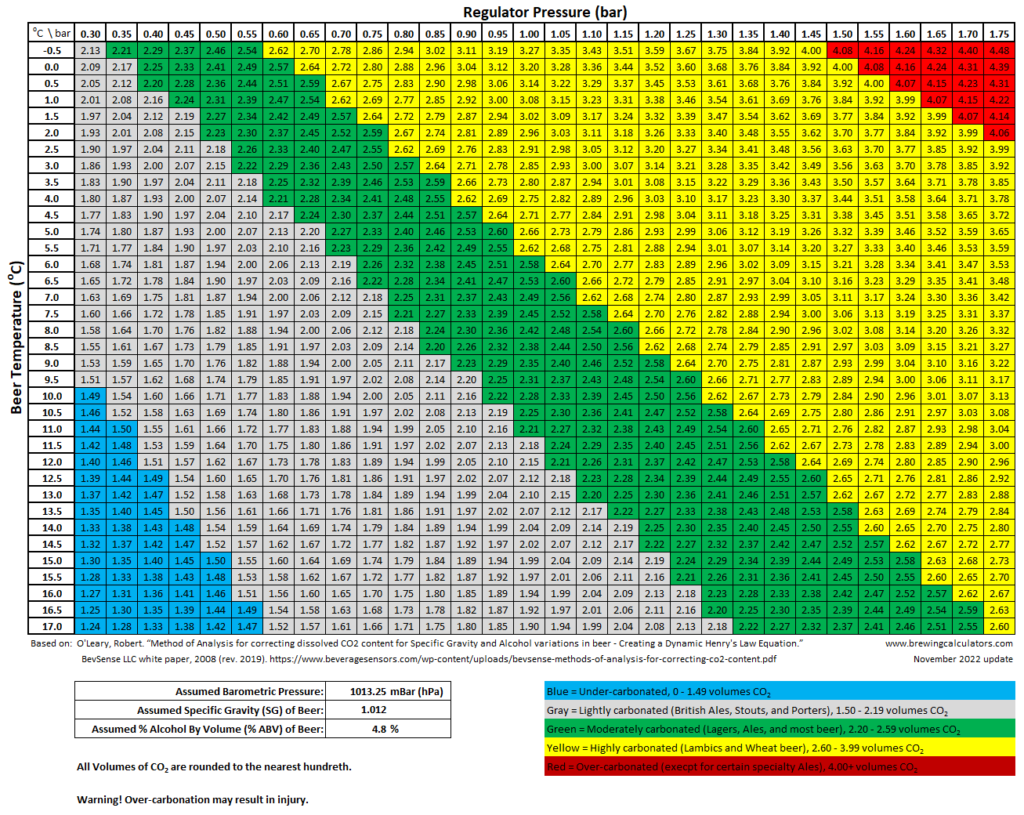Use and Assumptions
These charts are a quick and easy way to determine Volumes of CO2 in kegged beer using the Forced Carbonation “set and forget” method. These charts are an alternative to the Forced Carbonation Calculator and made using the same formula to calculate Volumes of CO2, but each chart uses some assumptions for the following inputs:
- Barometric Pressure – Find this in your local weather report. It is generally in units of milliBars (mB or mBar) or inches Mercury (inHg) for the US.
- Specific Gravity of Beer – From the brewery where the beer was made, or if the beer was home brewed from a hydrometer reading.
- % Alcohol By Volume (% ABV) of Beer – From the brewery where the beer was made, or if the beer was home brewed from an Original Gravity and Final Gravity reading input into the Alcohol By Volume Calculator.
It is advised to ensure that your Pressure and Temperature work within the set-up in which you intend to serve (i.e. it works with your kegerator). Otherwise, you’ll end-up serving your beer too foamy or too flat. The Beer Line Length Calculator may be able to help you with this.
Metric and US Units for Forced Carbonation
Metric and US units are both common for CO2 pressure regulators and temperature. It is also quite common for a mix of units to be used. For convenience, the charts below are in Metric, US, and Mixed Units.
If you are using a small screen to view these charts, you may have to turn your screen sideways prior to clicking on the thumbnails.


Typical Carbonation Level for Various Beer Styles*:
(Units in Volumes of CO2)
- British Ales 1.5–2.0
- Porter and Stout 1.7–2.3
- Belgian Ales 1.9–2.4
- American Ales 2.2–2.7
- European Lagers 2.2–2.7
- Belgian Lambic 2.4–2.8
- American Wheat Beer 2.7–3.3
- German Wheat Beer 3.3–4.5
Note that the vast majority of the Forced Carbonation charts available in publication and on the internet are ultimately based-upon “Methods of Analysis” American Society of Brewing Chemists (ASBC), 5th Edition 1949. The data from that publication was based on empirical data which converted the Henry’s Law equation for water to an equation for beer. The method used in this calculator is not a best-fit of the ASBC empirical data, but uses quantitative data for improved accuracy.
*Source: Palmer, John J. (2017). How To Brew: Everything You Need to Know to Brew Great Beer Every Time (Fourth Edition). Boulder, Colo.: Brewers Publications.

